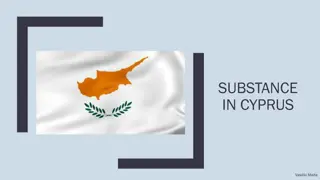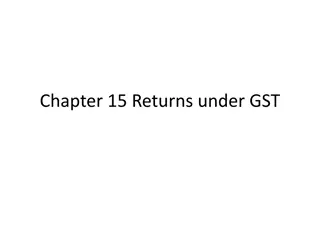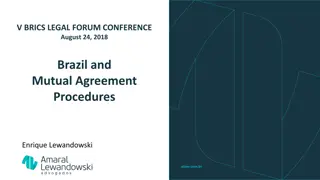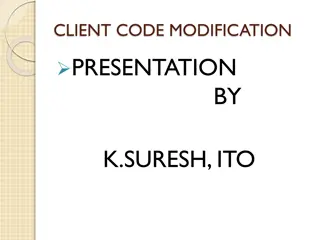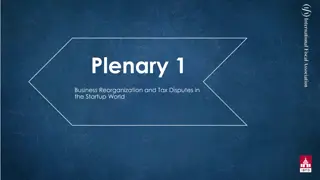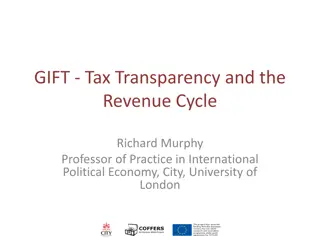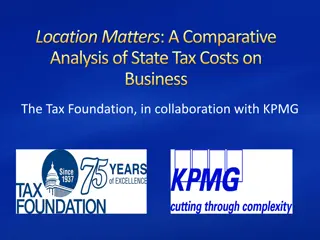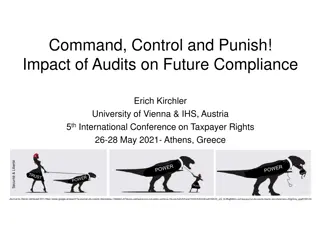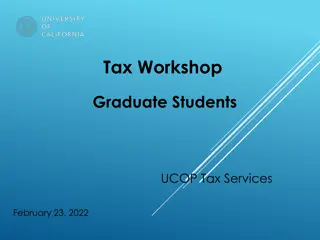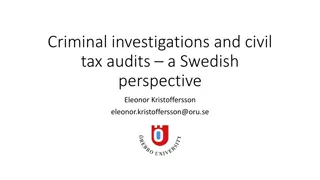The BEPS Action Plan: Addressing Tax Evasion in Europe
The BEPS Action Plan aims to combat tax evasion by multinational companies, focusing on restoring confidence in the tax system and ensuring profits are taxed where economic activities occur. Through various actions, such as strengthening CFC rules and preventing treaty abuse, the plan seeks to address base erosion and profit shifting. European countries, including France and the UK, are actively engaged in implementing these measures to counter tax avoidance practices.
Download Presentation

Please find below an Image/Link to download the presentation.
The content on the website is provided AS IS for your information and personal use only. It may not be sold, licensed, or shared on other websites without obtaining consent from the author.If you encounter any issues during the download, it is possible that the publisher has removed the file from their server.
You are allowed to download the files provided on this website for personal or commercial use, subject to the condition that they are used lawfully. All files are the property of their respective owners.
The content on the website is provided AS IS for your information and personal use only. It may not be sold, licensed, or shared on other websites without obtaining consent from the author.
E N D
Presentation Transcript
The BEPS action plan: French anticipation and European adjustments Master 2 DFA Rennes Law School 16 June 2016
Introduction: the BEPS Project Context The growth of international trade has induced multinational companies to focus on the search for the most tax-efficient legal structures. Faced with these strategies, the weaknesses of current rules create opportunities for base erosion and profit shifting. Impact The total impact on States tax income is assessed between 4 to 10 % of the overall corporate tax worldwide income. It means 100 to 240 billion euros per year. Objectives The first objective is to restore confidence in the system. The second objective is to ensure that profits are taxed where economic activities take place and value is created. 2
Introduction: the BEPS Project Action 3 Strengthen CFC rules Action 2 Neutralise the effect of hybrid mismatch arrangements Action 4 Limit base erosion via interest deductions and other financial payments Action 5 Counter harmful tax practices more effectively, taking into account transparency and substance Feasability report Published 16/09/2014 Develop a multilateral instrument Action 15 Published 16/09/2014 Address the tax challenges of the digital economy Action 1 1-Coherence Action 6 Prevent treaty abuse Action 7 Prevent the artificial avoidance of PE Status Action 8/9/10 Assuring that TP outcomes are in line with value creation 2-Substance 3- Transparency Action 13 Re-examine transfer pricing documentation Action 14 Make dispute resolution mechanism more effective Action 11 Establish methodologies to collect and analyse data on BEPS and the actions to address it Action 12 Require taxpayers to disclose their aggressive tax planning arrangements 3
Introduction: BEPS envisaged solutions ? Reflect commitments to implement standards proposed in final reports. Minimum standards Reflect the agreement on general tax policy direction which finally aims at becoming Minimum standards . Common approaches Best Proposed when negotiators fail to reach a consensus. practices Reflects the need to fi ll loopholes in current international standards (e.g. OECD Model Convention). Reinforcement of international standards 4
Introduction : European Union reaction Finland Sweden Estonia Latvia Denmark Lithuania United Kingdom Ireland Netherlands Poland Germany Belgium Czech Republic Slovakia Hungary Croatia Austria Slovenia France Romania Italy Bulgaria Spain Greece Portugal 5 Cyprus Malta
Introduction : European Union reaction January 2016: publication of the Anti-Tax Avoidance Package: - Revised Administrative Cooperation Directive; - Recommendation on Tax treaties; - Proposal of an Anti Tax Avoidance Directive ( ATAD ) with 6 legally-binding anti-abuse measures: Interest deduction rules; CFC rules; Framework to tackle hybrid mismatches; Already mentioned in the BEPS project Exit tax measure; General Anti Abuse Rule (GAAR); Switch over clause. Adjunction to the BEPS project 6
Agenda 1 - The combination of the BEPS project, French law and the ATA Directive 1.1 - Consistency pillar: interest deduction limitations, CFC and anti-hybrids rules 1.2 - Substance and transparency pillars: CbCR, LOB/PPT and PE 2 - How the EU intends to go further than the OECD 2.1 Proposal of a General Anti abuse rule (GAAR) 2.2 Proposal of a Switch Over clause 7
1- The combination of the BEPS project, French law and the ATA Directive 8
1.1 - Consistency pillar: interest deduction limitations, CFC and anti-hybrids rules BEPS: excessive interest deduction limitation Action 4: the best practice aims at tackling excessive interest deduction Limitation of the amount of deductible interest through 2 ratios relying on EBITDA: - Fixed ratio: deduction limited to a percentage (between 10 and 30%) of a company s EBITDA; Group ratio: for companies that exceed the previous threshold. - Three different tax regimes applying to non-deductible interest upon option Possible carry back and forward mechanisms Optional de minimis threshold 9
1.1 - Consistency pillar: interest deduction limitations, CFC and anti-hybrids rules France: excessive interest deduction limitation Art. 212 bis of the FTC Art. 212.II of the FTC Limitation deduction of interest paid to related party exceeding each of the following thresholds : A ratio of interest to 1.5 times the equity of the company ; 25% of the EBITDA ; The amount of interests received by the company from affiliated entities. Add-back of 25% of net financial expenses in excess of EUR 3.000.000. 10
1.1 - Consistency pillar: interest deduction limitations, CFC and anti-hybrids rules ATAD Proposal: excessive interest deduction limitation More favourable rules than Action 4 Possible carry-forward of non-deductible borrowing costs in the fiscal year without time limitation or; Possible carry-back of non-deductible borrowing costs in the fiscal year over 3-years period or; Possible carry-forward of unused capacity for 5 years (excess EBITDA). Safe harbor rule : No limitation under EUR 3.000.000 of borrowing costs at the level of the Group, Full deduction if the taxpayer is a standalone entity, Full deduction if the company s equity/assets ratio if the equivalent ratio of the Group. Deduction limited to 30% of EBITDA 11
1.1 - Consistency pillar: interest deduction limitations, CFC and anti-hybrids rules BEPS: controlled foreign compagnies (CFC) Rules should at least target situations where resident taxpayers have a legal or economic interest of more than 50% in the foreign entity; Two approaches are developped : entity and transactional approach. Transactional approach PC CFC Only attributable incomes Entity approach CFC PC 12
1.1 - Consistency pillar: interest deduction limitations, CFC and anti-hybrids rules France: controlled foreign companies (CFC) Art.209 B of the FTC: - Company established in France, liable to income tax, - Holding, directly or indirectly, more than 50% of a company established in a foreign country, - Subject to a favorable tax regime within the meaning of French rules. Entity approach 13
1.1 - Consistency pillar: interest deduction limitations, CFC and anti-hybrids rules ATAD Proposal: controlled foreign companies (CFC) Definition of a CFC Same criteria as applied in France Option for two approaches Entity/categorical approach Transactional approach 14
1.1 - Consistency pillar: interest deduction limitations, CFC and anti-hybrids rules BEPS: neutralizing hybrid mismatches Non Inclusion of the payment Deduction of interest paid with respect to a loan made by a disregarded entity A Co. A Co Hybrid financial instrument Interest Bank B Co B Co. Loan Deduction of interest paid by a resident company Deduction of the payment 15
1.1 - Consistency pillar: interest deduction limitations, CFC and anti-hybrids rules BEPS: neutralizing hybrid mismatches Two rules The payer s jurisdiction must deny deduction when the payment is not included in taxable income of the payee; Defensive rule: the payee s jurisdiction must tax the income when it has been deducted in the payer s jurisdiction. 16
1.1 - Consistency pillar: interest deduction limitations, CFC and anti-hybrids rules France: neutralizing hybrid mismatches Outgoing flow : denial of deduction of interest taxed in the payee s jurisdiction less than a 1/4 of the tax that would have been paid in France on those interest Incoming flow: denial of the participation exemption regime if the dividend is deducted in the payee s jurisdiction. No safeguard provisions. 17
1.1 - Consistency pillar: interest deduction limitations, CFC and anti-hybrids rules ATAD Proposal: neutralizing hybrid mismatches Deduction without inclusion Double deduction Deduction is only granted in the Member State where the payment has its source Member State of the payer shall deny the deduction of the payment 18
1.2 Substance and transparency pillars: CbCR, LOB/PPT and PE BEPS: transparency, the obligation of transfer pricing documentation The master file & the local file Organize rules at 2 levels Information regarding intangible assets, intra group transactions Failure to comply with such requirements triggers the application of penalties The Country by Country reporting Minimum standard Ensures that tax authorities obtain a complete understanding of the way MNEs structure their transactions Requires follow-up and cooperation between local tax authorities 27 January 2016 : 31 Countries signed the MCAA for the automatic exchange of CBCR. 19
1.2 Substance and transparency pillars: CbCR, LOB/PPT and PE France: transparency, the obligation of transfer pricing documentation The obligation to have TP documentation is not new in France Transmission of masterfile + localfile 2010 2016 Financial Law: As of January 1st 2016, the CbCR is implemented for French groups with a 750-million-euro turnover or more 2016 20
1.2 Substance and transparency pillars: CbCR, LOB/PPT and PE ATAD Proposal: transparency, the obligation of transfer pricing documentation 12 April 2016 : proposition to amend the Accouting Directive 2013/34/EU to introduce public CbCR for MNEs; The aim is to impose on EU and non-EU multinational groups the publication of a yearly report on the profit and tax paid. 25 May 2016 : adoption of a political agreement on the automatic exchange of tax- related financial information of multinational companies. 21
1.2 Substance and transparency pillars: CbCR, LOB/PPT and PE BEPS: substance, LOB and PPT clauses 2 mechanisms to deny treaty benefit: Limitation-on-benefits clause: - Specific anti abuse rule (SAAR) - Objective rule Principal purposes test clause: - General anti abuse rule (GAAR) - Subjective rule minimumstandard = option for States (PPT alone, PPT + LOB or LOB + specific mechanism that deals with conduit arrangements) 22
1.2 Substance and transparency pillars: CbCR, LOB/PPT and PE France: substance, LOB and PPT clauses France inserted some anti-abuse clauses in its double tax treaties, which aim and formulation are rather equivalent to those of the OECD. Before BEPS After BEPS DTT with Colombia dated June 2015: LOB clause. DTT with US (1994), Japan (1995), Panama (2011): LOB clause. DTT with Singapore dated January 2015: GAAR. 23
1.2 Substance and transparency pillars: CbCR, LOB/PPT and PE ATAD Proposal: substance, LOB and PPT clauses In the ATAD Proposal, no reference made to the LOB and the PPT. However, on its recommendation on the implementation of measures against treaty abuses adopted on May 13th 2016, the Commission encourages Member States to implement a GAAR based on a PPT in their double tax treaties. 24
1.2 Substance and transparency pillars: CbCR, LOB/PPT and PE BEPS: substance, the new definition of the permanent establishment Awareness that PE are commonly used for tax purposes by the MNEs; Circumvention of the the existing definition of PE. Impact on the commissionaire agreement Impact on the independent agent status Amendment for exceptions of the permanent establishment status Addition of an anti-fragmentation rule 25
1.2 Substance and transparency pillars: CbCR, LOB/PPT and PE ATAD Proposal: substance, the new definition of the permanent establishment No provision is directly provided in the ATAD Proposal Recommendation of the 28th January 2016 on the implementation of measures against treaty abuses: Member States are encouraged to implement the new provisions of Article 5 in their tax treaties, to address artificial avoidance of PE. 26
2 - How the EU intends to go further than the OECD 27
2.1 Proposal for a General Anti Abuse Rule (GAAR) The scope of the GAAR Ignores arrangements or series of arrangements where the main or one of the main purposes are to obtain a tax advantage that defeats the object or purpose of the applicable tax law and where the arrangements are not regarded as genuine. Tackles abusive schemes not covered by a specific domestic rule. Covers relations both between EU Member States and relationships with non EU countries (and also domestic relationships). No precision about the tax concerned. 28
2.1 Proposal for a General Anti Abuse Rule (GAAR) The content of the GAAR Proportionate method (different from the all or nothing method). Only the part of the scheme which does not have an economic substance will be ignored for the purpose of calculating the tax liability. 29
2.2 Proposal for a Switch Over Clause The findings 2 methods to eliminate double taxation: - Exemption - Tax credit Parent-subsidiary Directive: exemption of withholding tax on dividends or tax credit 30
2.2 Proposal for a Switch Over Clause The content of the provision Objective: taxation of income received in the EU if not sufficiently taxed in the State of source; Scope: dividends received from an entity in a third country and capital gains from the disposal of shares held in an entity in a third country; Threshold: statutory tax rate of the State of source 40% of the statutory tax rate in the taxpayer Member State; Imputation: EU entity receiving the income will be granted with a tax credit corresponding to the tax paid in the third country. 31
2.2 Proposal for a Switch Over Clause The issues Lack of details on the calculation of the tax credit; Losses incurred by an entity deriving from disposals of shares are not taken into account; Reference to the statutory corporate tax rate, specific incentive regimes are not considered; No safe harbour rule; The switch over clause does not apply where a treaty for the avoidance of double taxation is in place. 32
Conclusion 33
Conclusion Novelty BEPS : a massive and concerted effort against cross boarder tax planning Impact Necessity 34
Questions? 35
Thank you for your attention and your warm welcome! Universit Rennes 1 Master II DFA adeefr.asso.univ-rennes1.fr 9 rue Jean Mac 35 000 Rennes 36
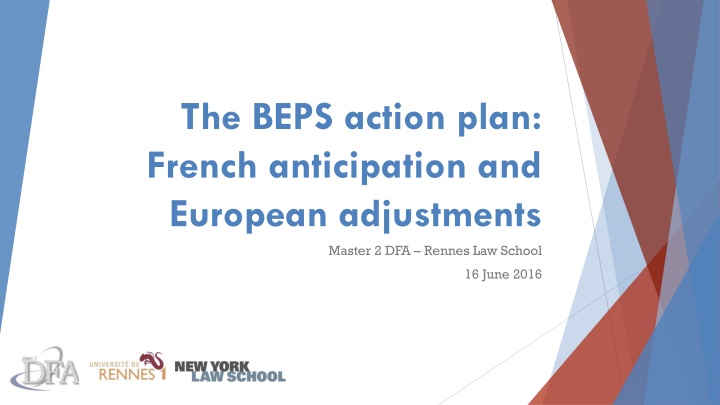




![Town of [Town Name] Real Estate Tax Rates and FY 2024 Budget Summary](/thumb/62211/town-of-town-name-real-estate-tax-rates-and-fy-2024-budget-summary.jpg)


